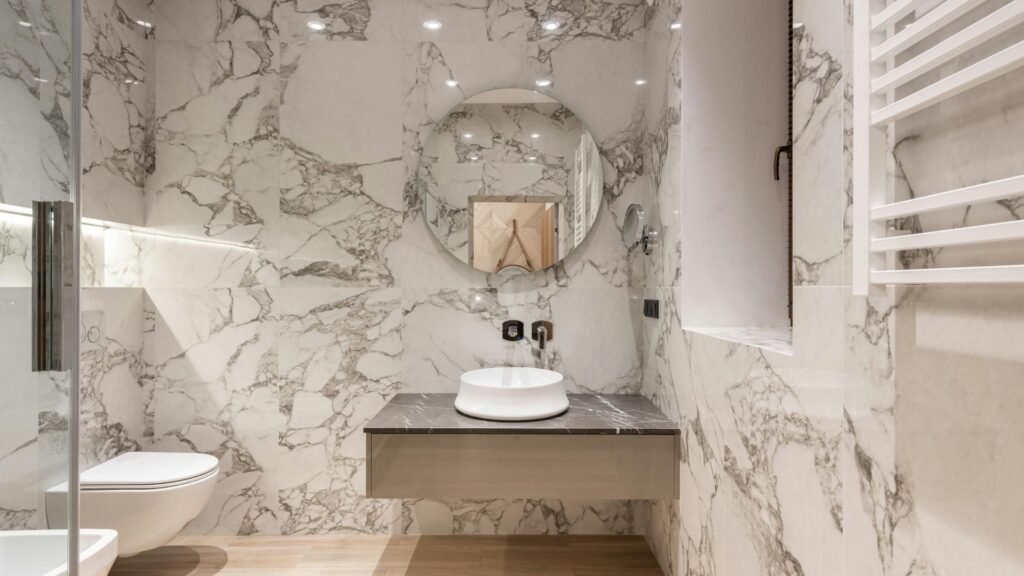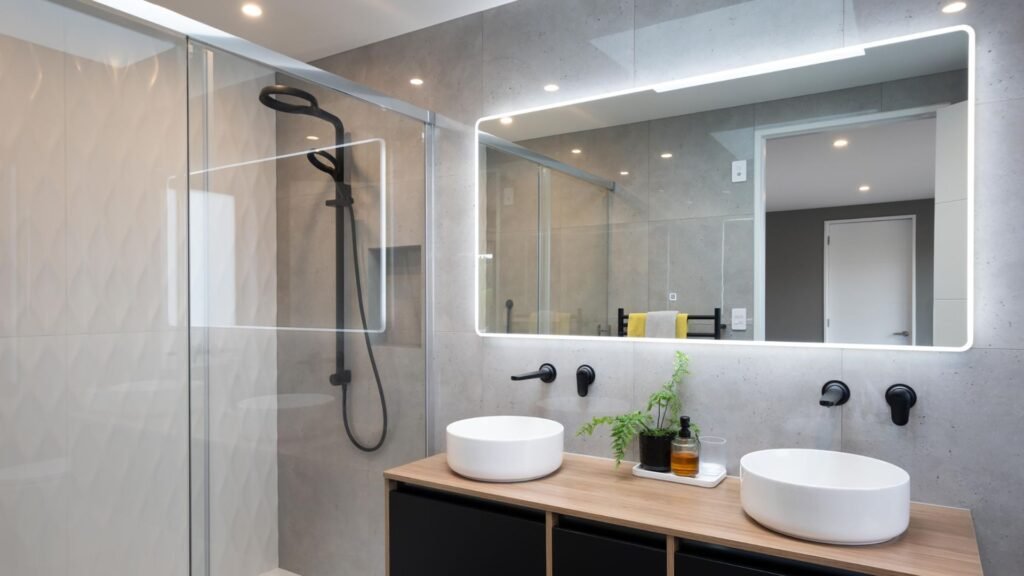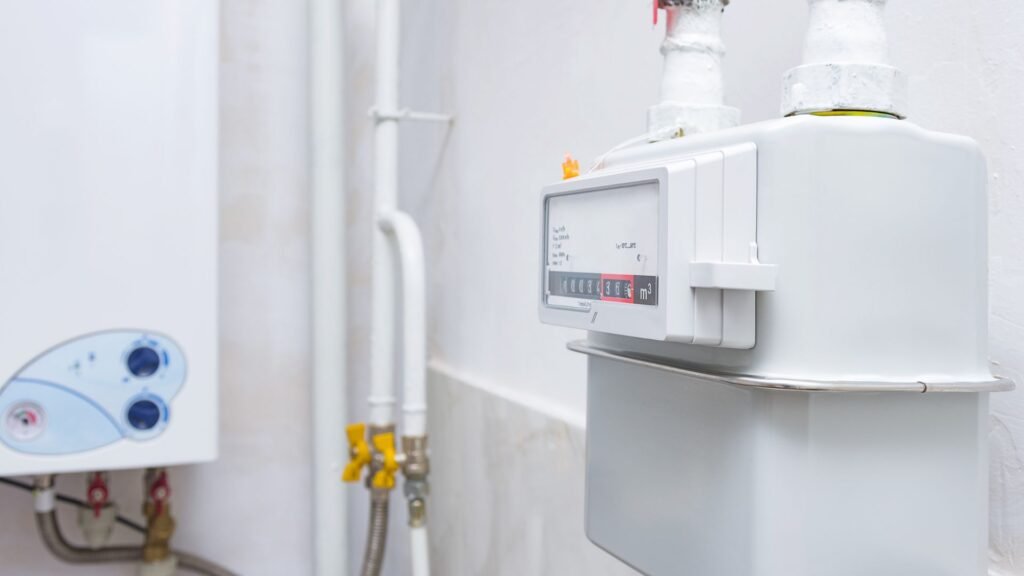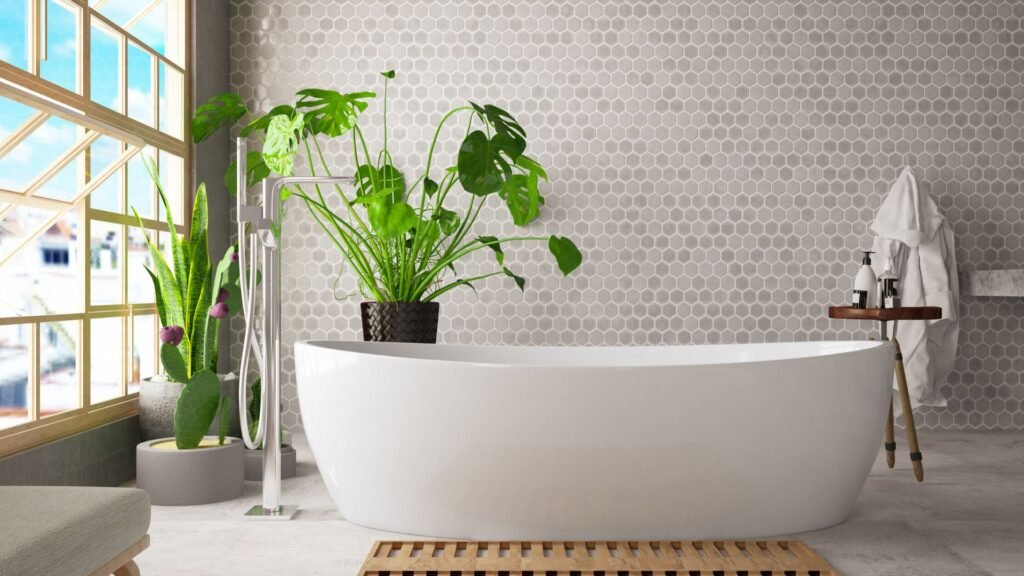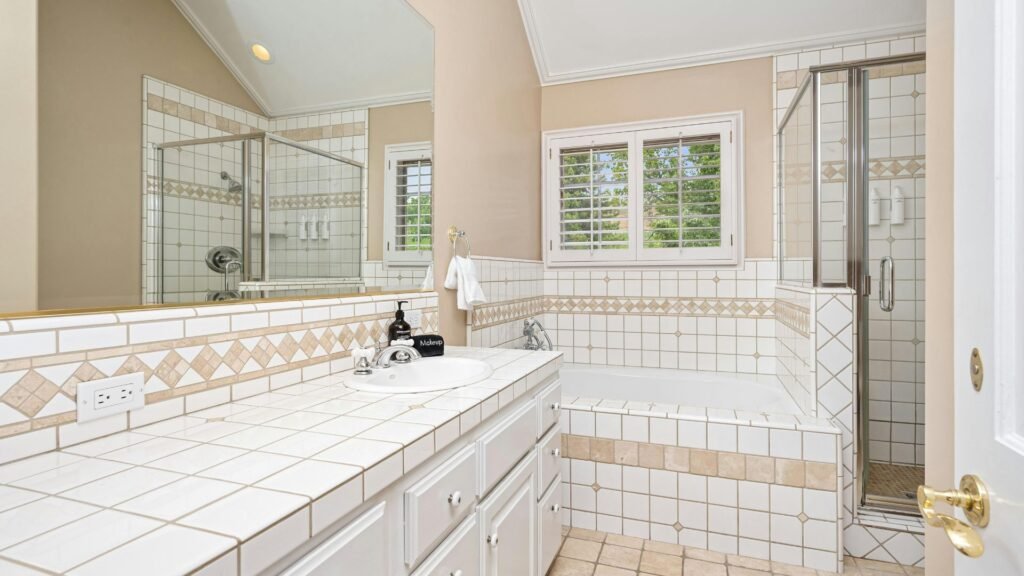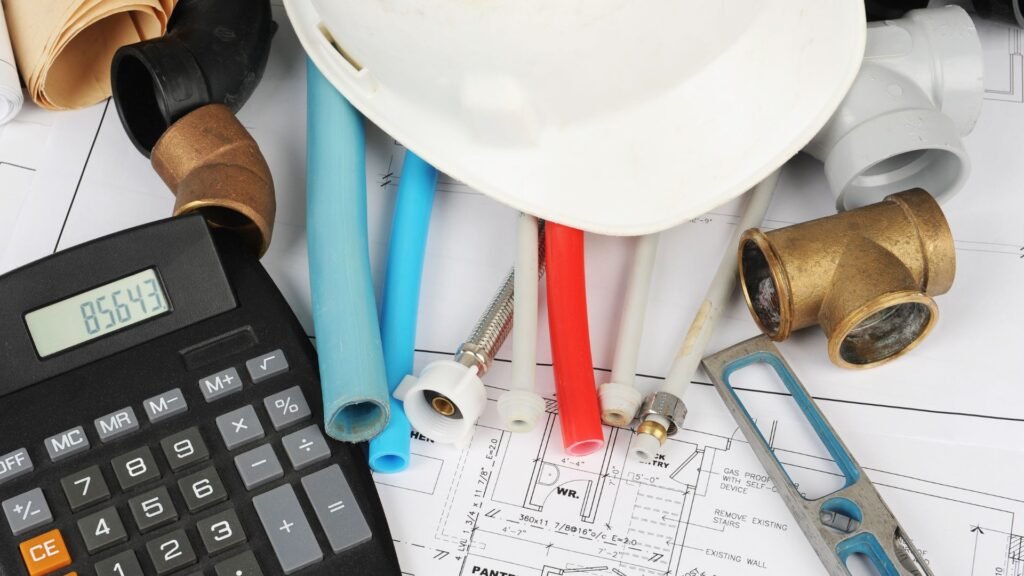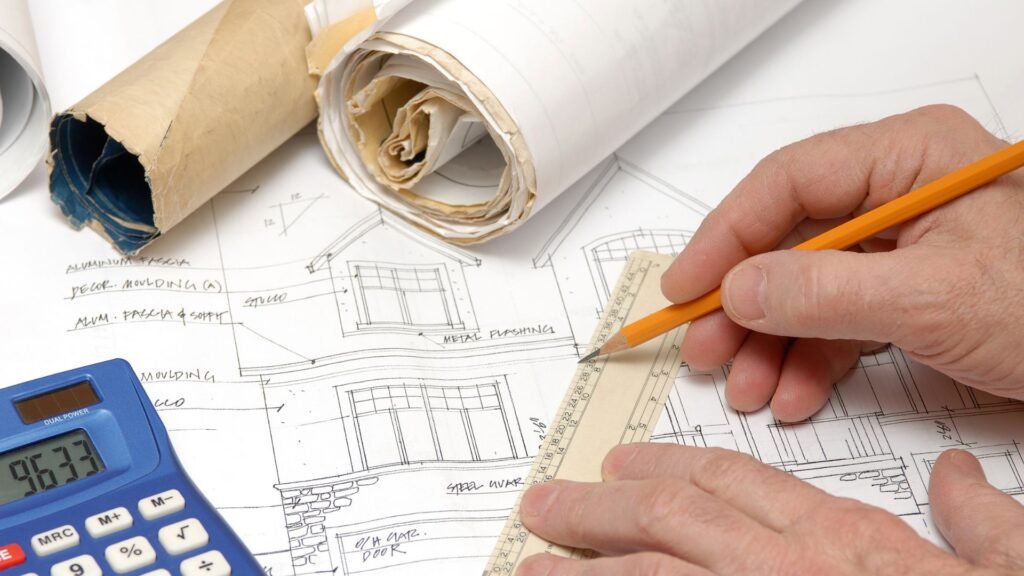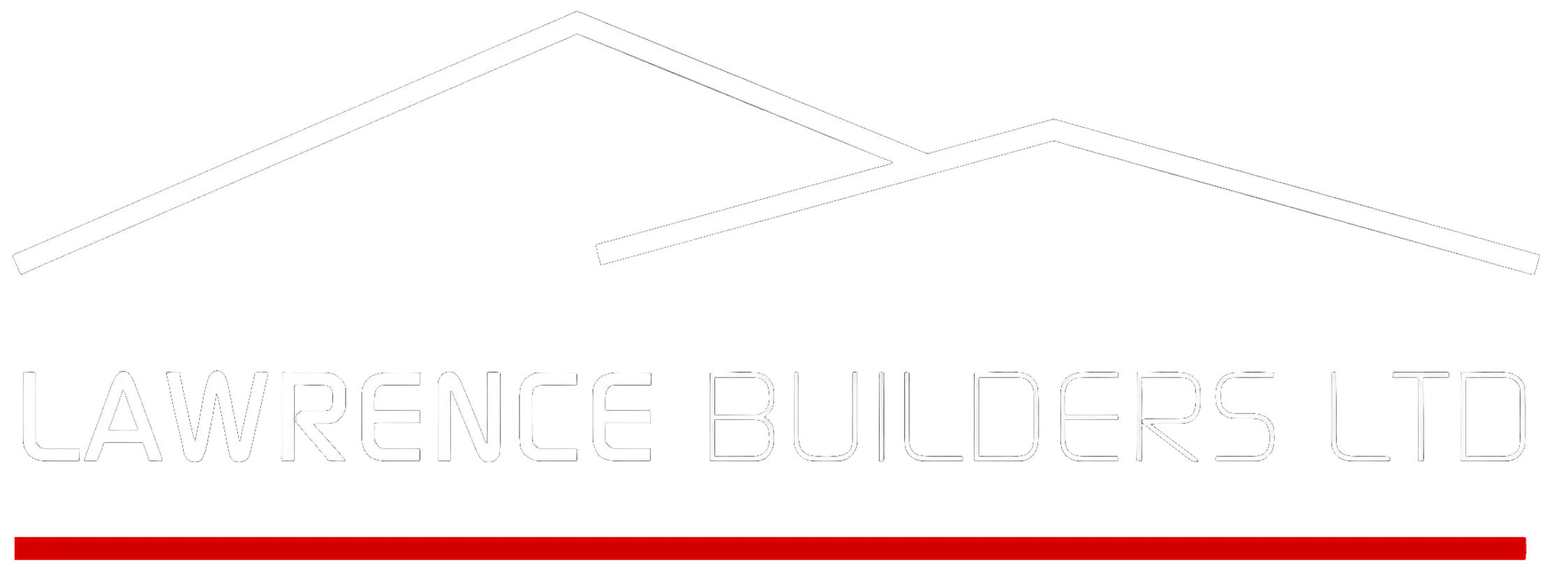Welcome to your guide on choosing the best material for bathroom walls in New Zealand, where practicality and style need to work hand in hand. Bathrooms here face unique challenges, from high humidity and dampness to the constant battle against mould, making the right wall material more than just a design choice. The right option not only keeps your space looking fresh but also saves you money and effort on repairs and maintenance in the long run. In this article, we’ll explore the most popular bathroom wall materials available in NZ, compare their pros and cons, and help you decide which one suits your home, budget, and lifestyle best.
The best materials for bathroom walls in NZ are tiles, acrylic panels, PVC panels, glass panels, natural stone, and waterproof paint. Tiles are durable and stylish, acrylic and PVC panels are budget-friendly and easy to maintain, glass offers a sleek modern look, natural stone adds luxury, and waterproof paint is a simple option for low-moisture areas. The right choice depends on your budget, bathroom size, and maintenance preferences.
Table of Contents
Understanding What Bathroom Walls Need In NZ
Bathrooms in New Zealand face unique challenges that go beyond style. While it’s tempting to choose wall materials based on looks alone, you need to consider the local climate, daily use, and long-term durability. Choosing the right bathroom wall material can prevent mould, reduce maintenance costs, and keep your bathroom looking fresh for years.
Climate Considerations
New Zealand homes deal with a mix of climates, from humid coastal areas to colder southern regions. In coastal towns, constant moisture and salt air can damage walls if the material isn’t moisture-resistant. In colder areas, condensation is a common issue, making ventilation and water-resistant walls even more important. Materials that handle these conditions well, like tiles or acrylic panels, will last longer and keep your bathroom healthier.
Importance Of Water Resistance And Easy Cleaning
Bathrooms are wet spaces by nature, so water resistance should be your top priority. If water seeps into walls, it can cause mould, rot, and costly repairs. Materials like tiles, glass panels, and acrylic sheets provide strong waterproofing, while also being easy to wipe clean. For busy families or rental homes, easy cleaning can save time and effort. Always look for options that combine water resistance with simple maintenance.
Safety And Long-Term Durability
Safety is often overlooked, but it matters. Non-porous, slip-resistant surfaces can prevent accidents in damp environments. At the same time, durability should guide your decision. While cheaper options like PVC panels may save money upfront, they might not last as long as tiles or stone. Investing in stronger, long-lasting materials can give you peace of mind and reduce the need for constant replacements.
Why The Right Choice Can Save Money And Stress Over Time
Making a smart decision now can save you from expensive problems later. For example, a homeowner who installs waterproof paint in a high-moisture bathroom may end up repainting every few years, while someone who chooses tiles may enjoy decades without major updates. The right material reduces mould growth, lowers maintenance costs, and adds value to your home. In short, choosing wisely protects both your wallet and your wellbeing.
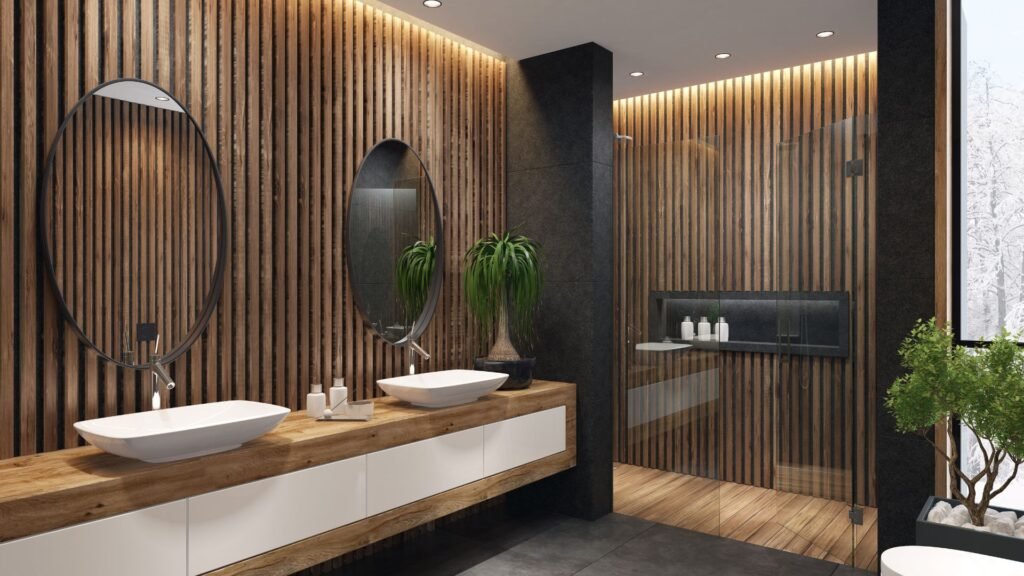
Popular Bathroom Wall Materials In NZ
When planning a bathroom renovation or building a new space in New Zealand, one of the biggest decisions you’ll make is choosing the right wall material. The bathroom environment is unique because it deals with constant moisture, steam, and frequent cleaning. This means the material you choose needs to be both practical and stylish. Below are the most popular bathroom wall materials in NZ, along with their pros, cons, and best uses.
Tiles
Tiles are one of the most common choices for bathroom walls in New Zealand. They are completely waterproof when installed correctly, making them ideal for showers and high-moisture areas. Tiles are also incredibly versatile, with endless design options ranging from simple ceramic to luxurious porcelain and mosaic patterns.
The downside to tiles is grout maintenance, as grout lines can attract mould and require regular cleaning. Installation costs can also be higher compared to panels or paint. Still, tiles remain a top choice for high-use bathrooms and homeowners who want a modern, long-lasting finish.
Acrylic Panels
Acrylic panels are becoming increasingly popular in NZ homes thanks to their simple installation and low maintenance. They provide a smooth, seamless look that is easy to clean, making them perfect for busy households. Since they come in large sheets, you won’t have to worry about grout lines or small gaps where mould can grow.
On the downside, acrylic panels have fewer design options compared to tiles. They are available in a range of colours and finishes, but the variety is not as extensive as ceramic or stone. They are best suited for quick renovations or rental properties where functionality and budget are the main concerns.
PVC Panels
PVC bathroom panels are an affordable and practical option for many Kiwi households. They are lightweight, easy to install, and fully waterproof, which makes them a strong alternative to tiles in certain areas. Their low cost also makes them appealing to budget-conscious homeowners.
That said, PVC panels do not offer the same premium appearance as stone or tiles. They may also have a shorter lifespan, especially in high-use bathrooms. Still, for anyone wanting a quick and affordable wall solution, PVC panels are a good choice.
Glass Panels
Glass panels deliver a sleek, modern look that can instantly elevate the style of any bathroom. They are also very easy to clean, since there are no joints or grout lines to worry about. This makes them a hygienic choice, particularly for showers and splash zones.
The biggest drawback is the cost, as glass panels are among the most expensive bathroom wall materials in NZ. They also show fingerprints and water spots more easily, requiring regular cleaning to maintain their polished look. For luxury bathrooms and contemporary designs, glass panels remain a standout option.
Natural Stone (Marble, Granite, Etc.)
For homeowners who want a truly high-end bathroom, natural stone is hard to beat. Materials like marble, granite, and travertine add a timeless and elegant look, while also offering impressive durability. Natural stone walls can turn a bathroom into a spa-like retreat and often increase the value of a home.
The disadvantages are cost and maintenance. Stone requires sealing to prevent staining and damage from moisture. It can also be very expensive to purchase and install. Natural stone is best reserved for upscale homes, feature walls, or homeowners willing to invest in both beauty and upkeep.
Paint With Waterproof Coatings
Paint with waterproof coatings is one of the most cost-effective ways to finish bathroom walls. It offers endless flexibility in colour choices and allows you to refresh the look of your bathroom without a major renovation. It is especially useful in powder rooms or areas with low moisture exposure.
The drawback is that even waterproof paint is not as durable as tiles or panels. It may require repainting every few years to maintain its look and resistance to moisture. While it isn’t the best option for showers or high-moisture areas, it works well for accent walls or bathrooms on a budget.
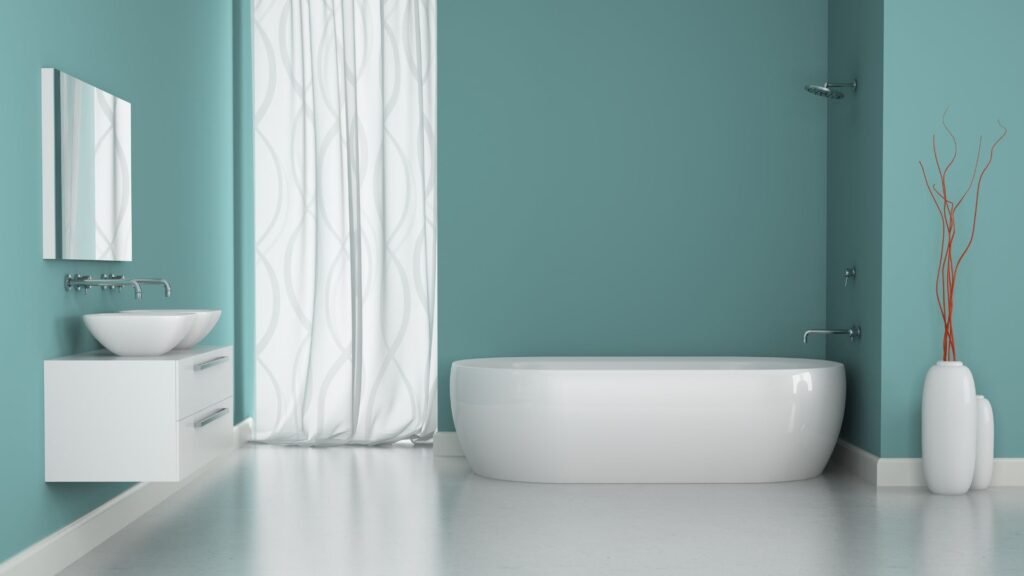
How To Choose The Best Material For Your Bathroom
Choosing the best material for bathroom walls in New Zealand isn’t just about what looks good. It’s about balancing cost, durability, and practicality. Every home has different needs, so the right choice will depend on your budget, the size of your bathroom, your preferred style, and how much effort you want to put into maintenance. Let’s break down the key factors that will help you decide.
Factor 1: Budget Vs. Long-Term Costs
Budget plays a big role when choosing bathroom wall materials. While cheaper options like PVC panels or waterproof paint are attractive upfront, they may need replacing sooner. Premium choices such as tiles, glass panels, or natural stone cost more initially but can last decades when installed correctly. It’s important to think beyond the purchase price and consider long-term costs for upkeep, repairs, and replacements.
Factor 2: Bathroom Size And Layout
The size and layout of your bathroom influence which materials work best. Smaller bathrooms often benefit from light-colored tiles or glass panels that create a sense of openness. Larger bathrooms can handle darker tones or feature walls with natural stone for a bold statement. The layout also matters, areas exposed to constant water, like showers, need waterproof solutions, while low-moisture walls can use paint or other budget-friendly finishes.
Factor 3: Style Preferences (Modern, Classic, Minimalist)
Your style preference will guide your material choice. For a modern look, glass panels or sleek tiles are popular. A classic bathroom might use ceramic tiles with patterned designs, while a minimalist space may rely on neutral-toned acrylic panels or plain tiles. The key is to pick materials that complement your overall home design so the bathroom feels like a natural part of your space.
Factor 4: Maintenance Level You’re Comfortable With
Not all bathroom wall materials require the same level of care. Tiles are durable but need regular grout cleaning to prevent mould. Acrylic and PVC panels are almost maintenance-free, making them ideal for busy households. Natural stone offers unmatched elegance but requires sealing and more frequent upkeep. Be honest about how much time and effort you’re willing to put into cleaning and maintenance before deciding.
Factor 5: Eco-Friendly Or Sustainable Options Available In Nz
More homeowners in New Zealand are considering eco-friendly choices for bathroom walls. Options like recycled glass tiles, sustainably sourced stone, or low-VOC waterproof paints help reduce environmental impact while maintaining durability. Choosing sustainable materials not only benefits the planet but can also improve indoor air quality and add value to your home.
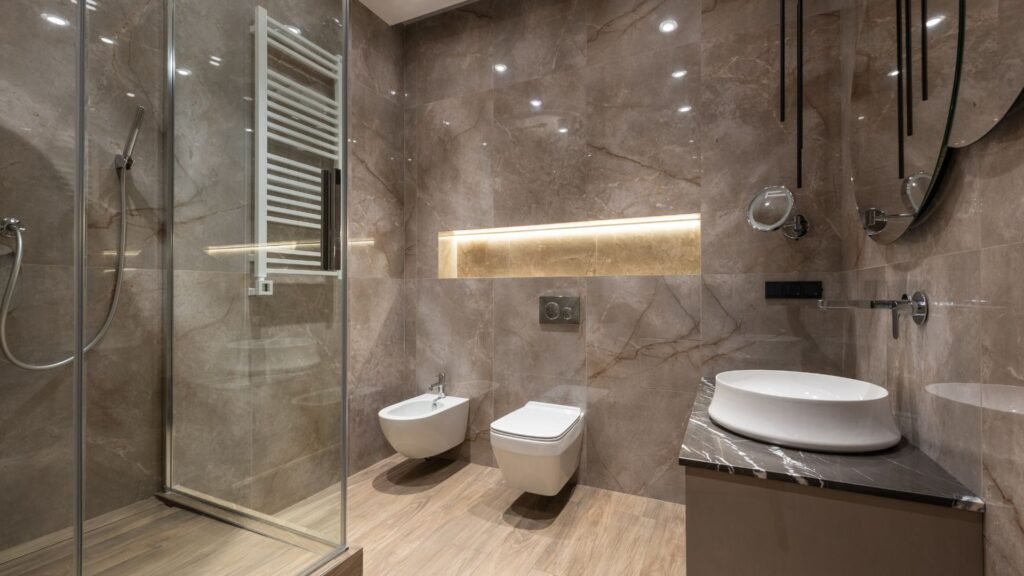
Common Mistakes To Avoid
When choosing the best material for bathroom walls in New Zealand, it’s easy to get caught up in appearances or short-term savings. But overlooking key factors can cost you more in the long run. Here are some of the most common mistakes homeowners make and how you can avoid them.
Choosing Looks Over Functionality
A beautiful bathroom is always appealing, but appearance should never come before practicality. Many homeowners pick wall materials that look stylish but don’t perform well in humid environments. For example, untreated wood may look warm and natural, but it quickly absorbs moisture and warps. Always check if the material is waterproof, durable, and suitable for daily use before making your decision.
Ignoring Ventilation And Moisture Control
Even the best wall materials won’t last long if your bathroom has poor ventilation. Without proper airflow, moisture builds up and leads to mould, mildew, and structural damage. Many people invest in expensive tiles or panels but forget to install a quality extractor fan or adequate windows. In New Zealand’s damp climate, this mistake is especially common and costly. Prioritize ventilation along with your material choice for a long-lasting, healthy bathroom.
Skimping On Professional Installation
Trying to cut costs by doing a DIY installation can backfire, especially with tiles, stone, or glass panels. Poor installation often leads to leaks, uneven finishes, or grout problems that shorten the lifespan of your walls. Professional installers understand waterproofing standards and can ensure your bathroom walls stay secure and functional. Spending a bit more upfront can save thousands in future repairs.
Not Considering Resale Value
Your bathroom plays a big role in the value of your home. Choosing the cheapest or trendiest material without thinking about long-term appeal can affect your resale prospects. For instance, bold wall colours or low-cost panels may not appeal to future buyers. On the other hand, timeless choices like tiles or natural stone add value and make your home more attractive on the market. Think about both your current lifestyle and how your choice might impact future buyers.
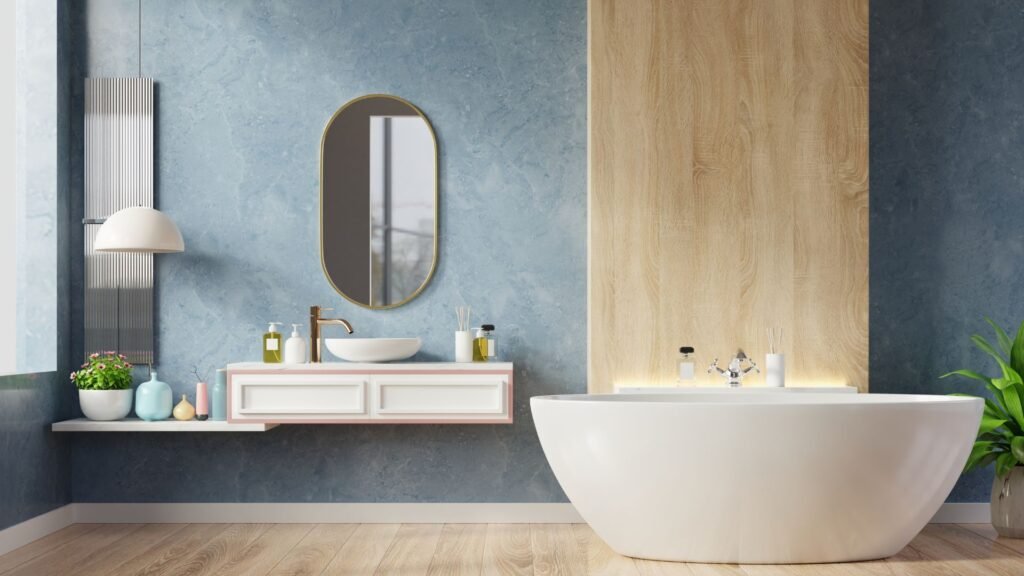
Cost Guide: Bathroom Wall Materials In NZ
When planning a bathroom renovation, the cost of wall materials is one of the biggest factors homeowners in New Zealand consider. Prices vary widely depending on the material, the quality of finish, and whether you hire a professional or attempt a DIY project. Below is a detailed breakdown of common bathroom wall options and what you can expect in terms of pricing and overall value.
Tiles
Tiles are one of the most popular choices for bathroom walls in NZ because of their durability and timeless look.
- Cost range: $40–$150 per square metre for standard ceramic or porcelain tiles. Premium options like mosaics or designer tiles can go beyond $200 per square metre.
- Installation: Professional tiling often costs more than the tiles themselves, averaging $50–$120 per square metre depending on complexity.
- Extra costs: Grout, waterproofing membranes, and sealing (for natural stone tiles) can add to the total bill.
Acrylic Panels
Acrylic panels are a modern alternative to tiles and are known for their smooth, grout-free finish.
- Cost range: $120–$300 per panel depending on size and brand.
- Installation: Easier and faster compared to tiles, so labour costs are generally lower, usually $60–$90 per hour if done by a professional.
- Extra costs: Adhesives and sealants, though relatively minor, are necessary for proper installation.
PVC Panels
PVC wall panels are among the most affordable bathroom wall options in NZ. They are lightweight and DIY-friendly, making them attractive for budget-conscious renovations.
- Cost range: $30–$70 per panel.
- Installation: Many homeowners choose DIY since panels click together, saving on labour costs. Professional installation may add $40–$70 per hour.
- Extra costs: While panels themselves are cheap, they may need replacing sooner than tiles or acrylic due to wear and tear.
Glass Panels
Glass shower or wall panels add a sleek, modern finish to any bathroom. They are durable but come with a higher upfront price.
- Cost range: $250–$600 per panel depending on thickness, size, and customisation.
- Installation: Professional installation is recommended for safety and precision, usually ranging from $80–$150 per hour.
- Extra costs: Regular cleaning products for glass and anti-smudge coatings can add to long-term maintenance.
Natural Stone
Stone materials like marble, granite, or travertine bring luxury into NZ bathrooms but are one of the most expensive options.
- Cost range: $200–$400 per square metre, with premium varieties exceeding $500.
- Installation: Highly skilled labour is required, often $100–$180 per square metre.
- Extra costs: Sealing is essential to prevent staining, and ongoing maintenance costs should be factored in.
Waterproof Paint
Waterproof or bathroom-specific paint is the cheapest solution for bathroom walls but is best suited for low-moisture areas.
- Cost range: $60–$120 for a 4-litre tin, covering around 40–60 square metres.
- Installation: DIY is common and saves costs, but hiring a painter can cost $35–$55 per hour.
- Extra costs: Paint usually requires reapplication every few years, especially in high-humidity spaces.
Installation Vs. DIY Considerations
- Professional installation: Ensures proper waterproofing and a high-quality finish but adds to the budget. It is recommended for tiles, glass, and stone.
- DIY projects: Work best with PVC panels, paint, and sometimes acrylic panels, helping cut costs significantly. However, mistakes can lead to water damage, which becomes more expensive to fix later.
Where Costs Add Up
Beyond the base material price, homeowners should account for extra costs such as:
- Labour: Skilled tradespeople like tilers or stone installers often charge high hourly rates.
- Maintenance: Materials like grout, stone, and glass require upkeep to maintain their look and functionality.
- Sealing and waterproofing: Essential for tiles and natural stone, and these costs are often overlooked.
- Disposal and prep work: Removing old wall coverings or fixing damaged surfaces can add to the budget.
This cost guide gives you a clear picture of what to expect when choosing bathroom wall materials in NZ. Balancing upfront expenses with durability and maintenance will help you find the right option for your home and lifestyle.
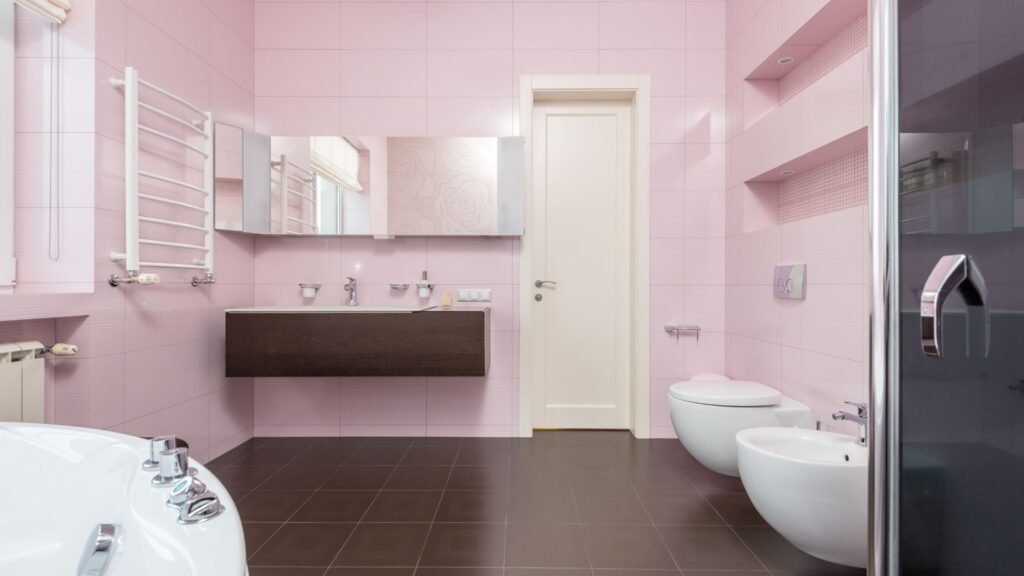
Expert Tips For Bathroom Wall Upgrades
Mix And Match Materials For Style And Practicality
One of the best ways to create a bathroom that feels both stylish and functional is to mix different wall materials. For example, you could use tiles in the shower area where water exposure is constant, and then switch to waterproof paint or PVC panels for the rest of the walls. This not only saves money but also allows you to create a unique design. Mixing textures, such as sleek tiles with painted surfaces, can also add character and depth without going over budget.
Use Feature Walls To Balance Budget And Design
A feature wall can transform a bathroom without requiring a full renovation. By choosing one wall to highlight with tiles, stone, or bold colors, you get a striking look while keeping costs under control. Many homeowners in New Zealand opt for tiled feature walls behind vanities or showers, creating a focal point while using more affordable materials elsewhere. This approach works well in small bathrooms too, giving them a sense of luxury without overwhelming the space.
Invest In Proper Sealing And Ventilation
Even the best bathroom wall materials can fail if sealing and ventilation are ignored. Bathrooms in New Zealand often face high humidity, especially in coastal areas. Without good sealing, water can seep behind tiles or panels and cause long-term damage. Proper ventilation, like an extractor fan or a window that allows airflow, is equally important for preventing mould and mildew. Always make sure sealants are applied correctly and maintained over time to keep your bathroom walls in top condition.
Work With NZ Suppliers Familiar With Local Climate Needs
Not all bathroom products are created equal, and what works overseas may not perform as well in New Zealand’s unique climate. Choosing local suppliers ensures you get materials suited for Kiwi homes, whether you live in a damp coastal area or a colder inland region. Local experts also understand building codes and can recommend the right waterproofing systems. By working with NZ-based suppliers and installers, you reduce the risk of choosing materials that might look good at first but fail quickly in real conditions.
Still deciding between tiles, panels, or paint? Let us make it easier for you. Visit our homepage and access helpful tools and guides designed for your needs.
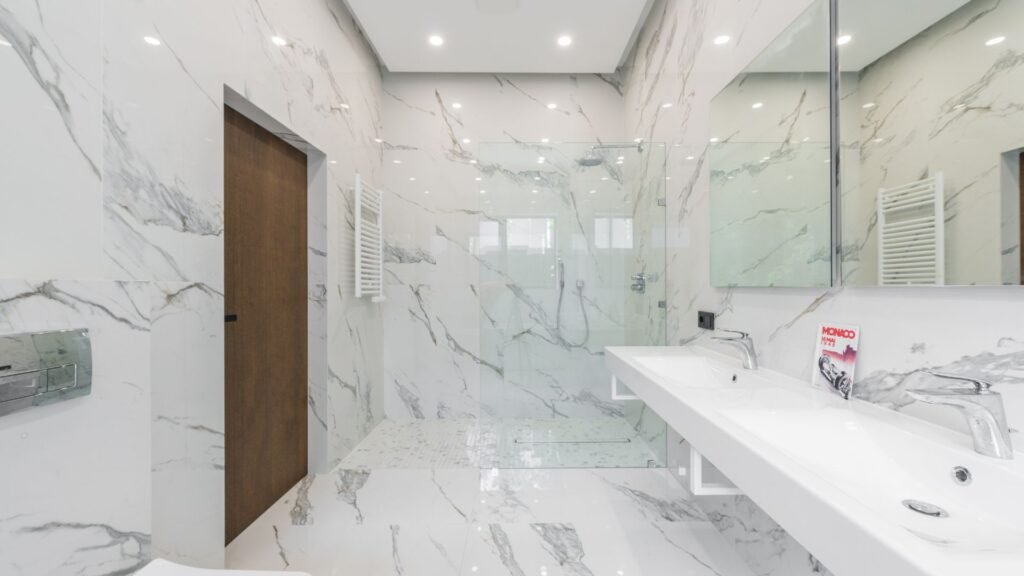
FAQs: About Best Material For Bathroom Walls In NZ
What is the most durable material for bathroom walls in NZ?
Tiles and natural stone are considered the most durable options. They resist moisture, last for decades with proper care, and add strong visual appeal.
Which bathroom wall material is the easiest to clean?
Acrylic and glass panels are the easiest to clean since they have smooth surfaces with no grout lines. A quick wipe with a damp cloth usually removes dirt and soap scum.
What is the cheapest bathroom wall option available in NZ?
PVC panels and waterproof paint are the most affordable. They are great for budget-conscious homeowners but may not last as long as tiles or stone.
Can I use normal paint for bathroom walls?
Normal paint won’t hold up against moisture and humidity. Instead, use waterproof or bathroom-specific paint with mould-resistant properties for better protection.
Are acrylic panels better than tiles?
Acrylic panels are easier and faster to install, often cheaper, and low-maintenance. Tiles, while more costly and time-consuming to install, offer a wider range of designs and superior durability.
Do I need council consent to renovate bathroom walls in NZ?
Most cosmetic wall changes, like replacing tiles or panels, don’t need council consent. But major renovations involving plumbing or structural changes may require approval.
What bathroom wall material is best for preventing mould?
Tiles, glass panels, and acrylic panels are highly resistant to mould when installed properly and maintained with good ventilation. PVC is also mould-resistant but less durable.
How long do PVC and acrylic bathroom wall panels last?
PVC panels typically last around 10–15 years, while acrylic panels can last 15–20 years or more with proper care. Tiles and stone usually outlast both.
Can I mix different materials in one bathroom?
Yes, many homeowners combine materials. For example, tiles in the shower area for durability, and waterproof paint or panels on other walls to save money and add variety.
What factors should I consider before choosing bathroom wall materials?
Think about your budget, style preference, bathroom size, moisture levels, and how much maintenance you’re willing to handle. Also consider resale value if you plan to sell your home in the future.
Conclusion
Choosing the best material for bathroom walls in NZ comes down to balancing durability, style, and budget, with popular options like tiles, acrylic panels, PVC panels, glass panels, natural stone, and waterproof paint each offering unique benefits. Tiles remain a favorite for their timeless look and long-lasting quality, while acrylic and PVC panels suit homeowners who want affordable, low-maintenance solutions. Glass and natural stone bring luxury and elegance but require a higher investment, and waterproof paint is a flexible choice for smaller spaces or areas with less moisture. The right option for your bathroom will ultimately depend on your lifestyle, design preferences, and how much upkeep you’re willing to handle. Before making a final decision, take the time to compare materials, visit local suppliers in New Zealand to see samples firsthand, and consult experienced professionals to ensure your bathroom walls not only look great but also stand the test of time.



